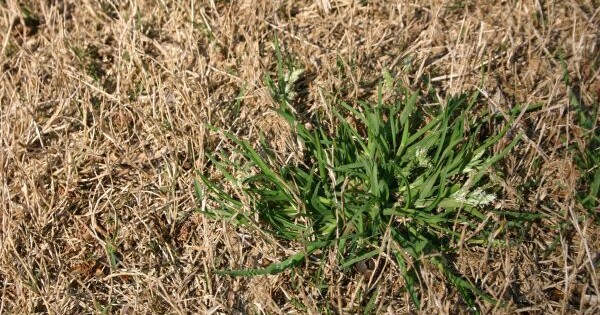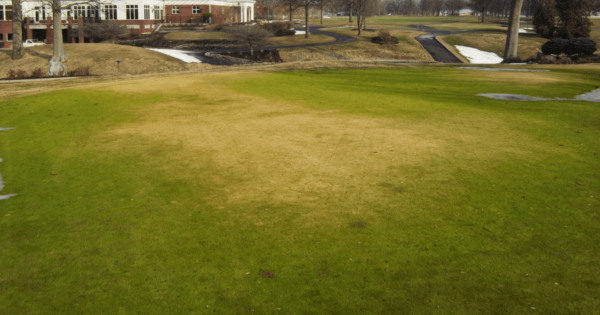Turf-type tall fescues: The lower input turfgrass
Tall fescues, what’s new?
For cool-season lawns and general turf areas, people have had a long love-hate relationship with tall fescues. At this time of year it is not uncommon for many homeowners to confuse tall fescue with crabgrass and people like me are getting contacted about crabgrass “break-through”. In reality, this plant “broke through” long ago and it’s not.
Check out: Down and Dirty
What’s the deal with tall fescue? It is a perennial turf species that is described as a somewhat coarse-textured, durable and deep-rooted plant. It can grow quite vigorously in spring and fall and once established has an extensive root system that helps it withstand drought conditions. Some plants do produce short rhizomes, and some seed companies have been trying to improve this particular trait in an attempt to speed lateral recovery. Tall fescue was originally introduced into the United States from Europe in the early 1800’s and it can be found growing in a wide range of conditions from low, damp pastures, wet meadowlands, roadside drainage ditches to full sun, very dry sites and has good shade tolerance. It performs best, however, on well drained clay soils with organic matter.

Many people are concerned about using turf-type tall fescues because they think they have really wide leaves. Here is a cross-section of some different commercially available tall fescues compared to a Kentucky bluegrass. Left to right: America Kentucky bluegrass compared to four tall fescues: Kentucky-31 (pasture type!) and three “turf-types”, Regenerate, 4th Millennium and ATF-1704.
What about cultural inputs and growing this species?
In general, established turf-type tall fescue can perform well on about 2-3 pounds of actual nitrogen per year (split into several applications of course…). Mowing height? It is widely thought that tall fescue needs to be “mowed high” (e.g. 3” or more) to survive. In some of our research with improved cultivar blends, we have found it to be an adaptable species and can thrive at ¾ inch if needed. Supplemental irrigation? Of course it will respond to water but it is not essential for survival here in the cool-humid region.
Cultivar (cultivated variety) selection?
Kentucky-31 and Alta are the 2 oldest varieties of tall fescue in use today (AVOID THESE if appearance is important!!!). Alta was selected from a stand of tall fescue in Oregon in 1923 and K-31 is an increase from tall fescue found in 1931 on a Kentucky farm where it had been growing for 50 years. Both of these grasses are coarse textured and produce a rather weak, low-density turf. Eventually in the 1980’s one of the first turf types “Rebel” was released and some ‘dwarf’ cultivars like “Bonsai” became available. Today there are even more turf-type tall fescue winners to choose from… For some comprehensive data take a look at the recent National Turf Evaluation Program (NTEP) data. In addition if drought tolerance is really important to you, there is a list of some excellent choices on the Turfgrass Water Conservation Alliance (TWCA) website.
So what does this discussion about tall fescue have to do with this series of articles where we normally focus on soil related issues? From my perspective, if someone is looking for a lower maintenance species that will be tolerant of difficult soil situations (and most urban soils are rather “difficult”). This is one of the Rockstars of the turf species world! In terms of tolerance and persistence it is hard to beat especially compared to some of the other species and is a reliable workhorse. It can establish rapidly from seed, especially compared to Kentucky bluegrass and is tolerant of many management programs. One of my students recently described tall fescue as that highly desirable “low-maintenance” girl/boyfriend. It’s happy hanging around the house in sweat-pants laying low but also has the ability to clean up and go out on the town dressed to the “9’s” when necessary.
What’s my point???
With the optimal seeding window approaching in about 4-6 weeks it’s time to start thinking about what to plant. I recently visited with a golf course manager who had some high traffic “drive on/off” areas near a putting green and the existing Kentucky bluegrass was a bit sunken and slow in terms of vigor. I told him that I would encourage him to take a look at the newer turf-type tall fescues. Why? They establish quick and can be very durable for this type of use. Bottom line, these new tall fescues are not your mother’s old pasture “types” and remember “better quality seed = better turf areas!” Choose wisely.
In the meantime, as Dr. Fidanza says… #HitIt !!! Wishing you all the best for the rest of this turf season.
Lastly, a shameless plug for an opportunity to “get your turf on!” and learn more … The Purdue University Turf and Landscape Field Day is coming up on Tuesday 12 July. Come learn more about low-maintenance lawn grasses and MUCH MORE!!!
 Dr. Cale Bigelow – @BIGturfteaching
Dr. Cale Bigelow – @BIGturfteaching

